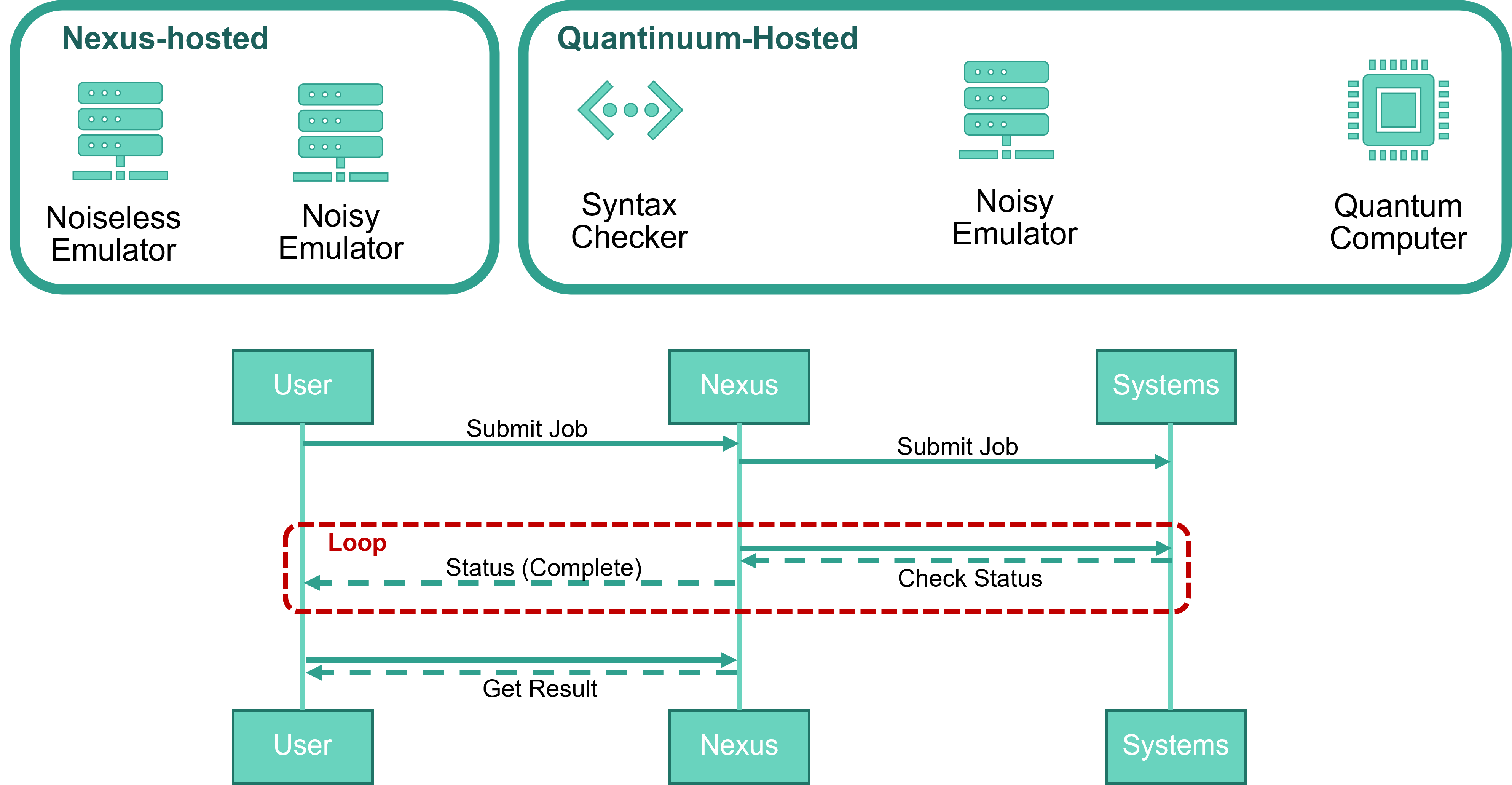Quantinuum Systems¶
Subscription users can access the following targets:
Quantinuum hardware
Quantinuum emulators
Machine-specific syntax checkers

Available targets accessible by end users. There are noisy and noiseless emulators hosted in Nexus. In addition, Quantinuum provides server-side emulators, syntax checkers and quantum computers, also accessible via Nexus.¶
Quantum Computers¶
Trapped ion quantum computers are available to users utilizing the System Model H2 generation of quantum computers, powered by Honeywell. The qubit layouts on both System Models H2 are not static. Rather, any two qubits can be be transported into one of four or more parallel gate zones to allow all-to-all connectivity. The base trap architecture for all hardware generations is known as a Quantum Charge-Coupled Device (QCCD). The System Model H2 architecture is a racetrack shape [1], [2]. The Quantinuum Helios architecture is a tuning fork shape [ADD CITATIONS].
Individual machines that use the System Model H2 generation of ion traps are designated by the H2-X nomenclature. Individual machines that use the Quantinuum Helios generation of ion traps are designated by the Helios-X nomenclature. All devices under a specific nomenclature use the same ion trap design, but at times may have a different number of parallel gate zones, maximum available qubits, and specific performance metrics. At all times, the performance of the quantum computers will have errors not exceeding the maximum errors listed in the Product Data Sheets.
Emulators¶
To support quantum algorithm development and design, emulators are available that model each machine’s specific ion transport and error rates. The emulators operate on a physical model as well as include a detailed error model of each Quantinuum quantum computer. In addition, options are provided to the user to experiment with the noise parameters of the emulator. The emulator user guide provides more information on operation and noise model capability.
Syntax Checkers¶
The syntax checkers are provided to check program syntax and are specific to each device. Before submitting quantum circuits to the Quantinuum hardware or emulators, use of a syntax checker is highly recommended. Jobs submitted to the Quantinuum hardware are in QIR (Quantum Intermediate Representation) format. The syntax checker enables checking of the code to ensure it will run before being submitted to the hardware or emulators. Access to a syntax checker corresponds to the machines available in a user’s subscription.
If the code compiles, the syntax checker will return a completed status, the cost of the circuit in Hardware Quantum Credits (HQCs), and results of all (0, 0, ..., 0). Submission to the syntax checker does not incur a HQC cost. If the code does not compile, the syntax checker will return a failed status and give the error returned.
API Interface¶
Direct communication with Quantinuum end points occurs via API endpoints based on the Quantum Intermediate Representation (QIR) or OpenQASM 2.0. The documentation on this website details examples in pytket and qnexus[3].